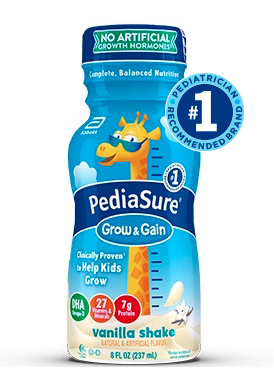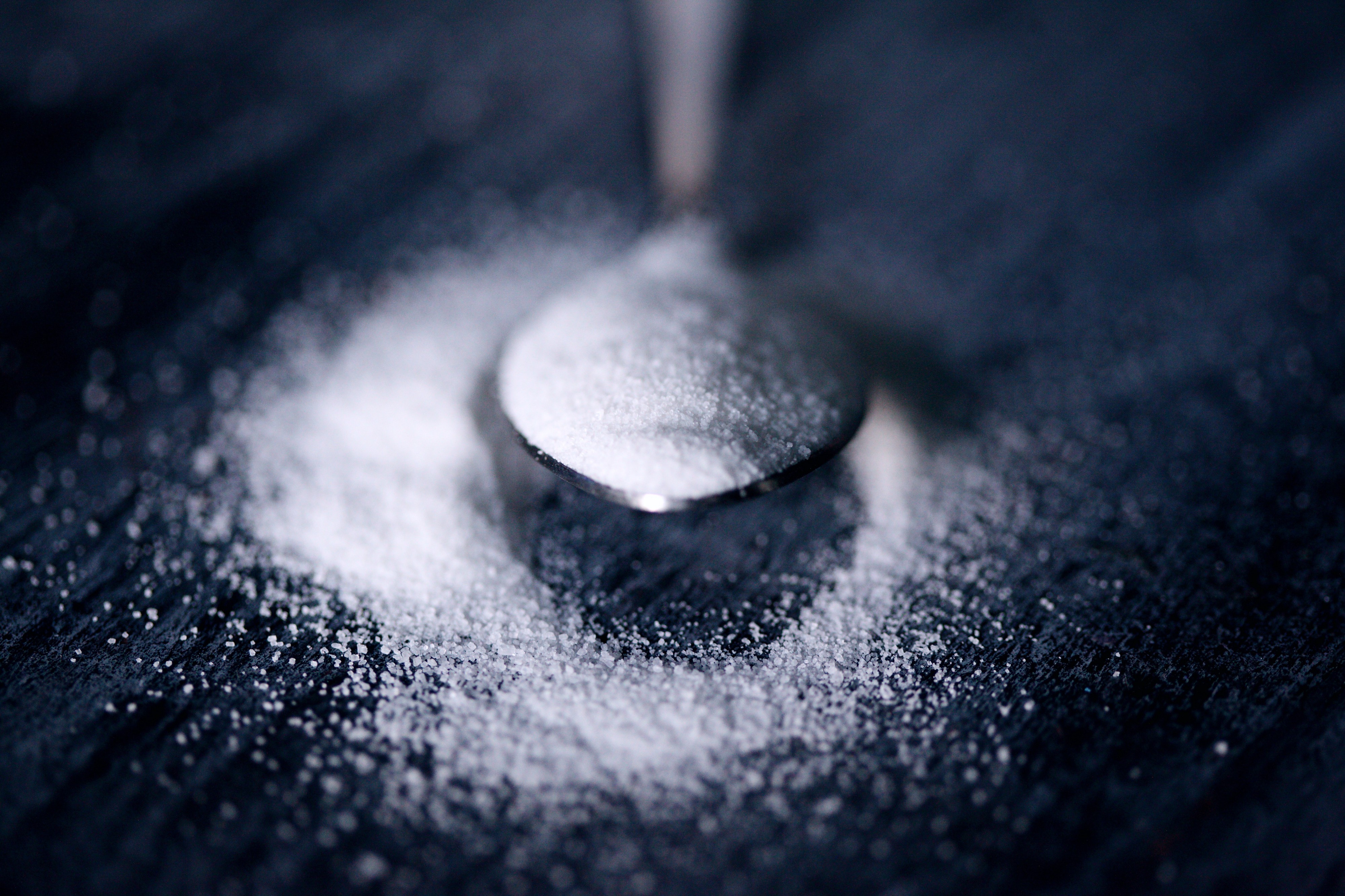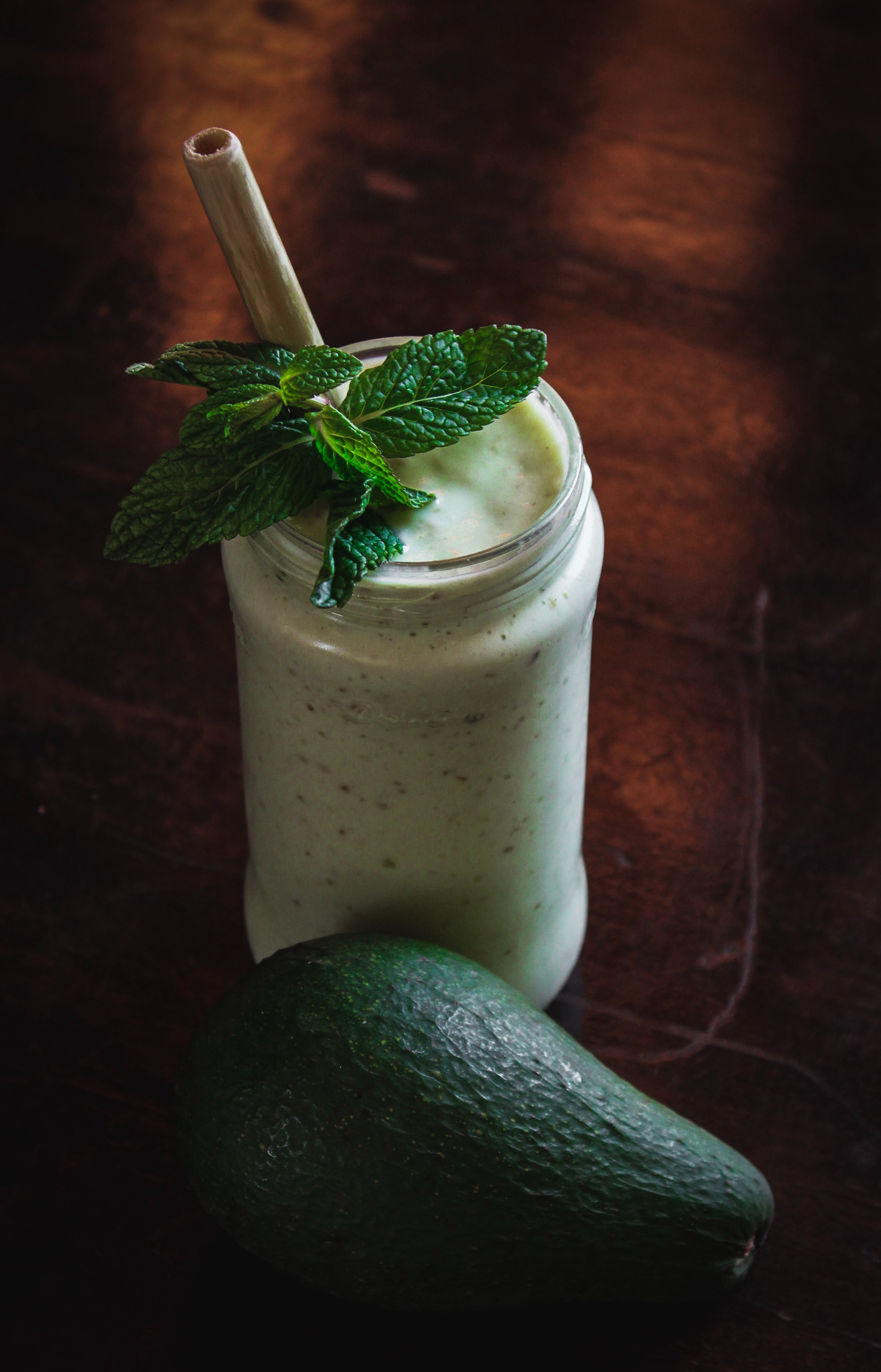The Importance of Digging Deep into Product Labels
Is this REALLY the #1 Recommended Pediatrician Brand
I love this line from a Maren Morris song:
?When the bones are good, the rest don?t matter.?
This pretty much sums up how I feel about nutrition. Stress management, sleep, movement and mindfulness are all important parts of a healthy lifestyle, but I believe without whole foods and a nutritious diet we won?t have a strong foundation to build from. And if the foundation is not good, the rest doesn?t matter. This is why it?s so important to start healthy eating habits from an early age.
 Healthy Eating Habits from an early age can help ensure a solid foundation for good health. Photo Credit: Ben White @ Unsplash
Healthy Eating Habits from an early age can help ensure a solid foundation for good health. Photo Credit: Ben White @ Unsplash
So when a friend recently asked if I thought PediaSure was a good meal replacement for kids, my immediate reaction was ?NOOOOOOOO!? But since I didn?t have any direct experience with PediaSure, I went digging.
Here is what I discovered.
PediaSure?s claim is that it is ?clinically proven nutrition to help kids grow and a nutritious supplement for kids falling behind on growth.?

In looking at the packaging the first thing I noticed was the call out:
?#1 Pediatrician recommended brand?
Previous experience with this claim was on Flintstones vitamins which displays a similar claim. Yet when I looked at the list of ingredients in a Flintstones vitamin, I wonder who these pediatricians are that claim a product with a long list of harmful ingredients should be consumed by children. Ingredients that include: aspartame, butylated hydroxytoluene, carrageenan, corn syrup solids, hydrogenated vegetable oils and littered with artificial colours.
This did not leave a good feeling in the pit of my stomach but I vowed to stay open as I continued to learn more.
The second claim on the front of the package:
?Clinically Proven?
I learned a long time ago to look deeper into who is funding the studies and research that back up consumer product claims.
I?ve read research that stated soda pop is more hydrating that water.
No joke.
You can imagine who funded that research. The problem with these claims is they confuse people. When reading conflicting information we don?t know who or what to believe, so we throw up our arms and continue on with what we?ve always done.
So I dug a little deeper?What research was conducted?
I found two research articles:
- A study that was done on 31 severely malnourished Pakistani children between the ages of 1?5 years old. After taking care of acute medical complications, they were given PediaSure for the initial 2 weeks of rehabilitation. The study concluded that PediaSure can be used effectively in the initial stage of nutrition rehabilitation of severely malnourished children. (Source 1)
- The second study was done with fourteen chronically disabled children who were fed PediaSure for 12 weeks. After 3 months, they concluded that PediaSure is a safe and effective product for nutrition and growth in chronically disabled children who require specialized nutritional support.(Source 2)
Two studies, on a total of 45 kids, with very specific challenges. One with severely malnourished Pakistani children and another with chronically disabled children. I could find no studies on children that were based on the average child in North America who may be labelled a ?picky eater?.
And then I turned the bottle over to read the list of ingredients…
What is in our children?s food can be shocking!
Unless you?re a nutritionist or dietitian, reading nutrition labels can be confusing at best. In this case the list was so long it required a strong coffee and some concentrated time.
Ingredients in PediaSure Grow & Gain:
?Water, Corn Maltodextrin, Sugar, Blend of Vegetable Oils (Canola, Corn), Milk Protein Concentrate, Soy Protein Isolate, Nonfat Milk. Less than 0.5% of: Natural & Artificial Flavor, Cellulose Gel, Potassium Chloride, Magnesium Phosphate, Calcium Phosphate, Potassium Citrate, Tuna Oil, Calcium Carbonate, Potassium Phosphate, Choline Chloride, Ascorbic Acid, Monoglycerides, Soy Lecithin, Cellulose Gum, Salt, Carrageenan, Potassium Hydroxide, Inositol, Taurine, Stevia Leaf Extract, Ferrous Sulfate, Monk Fruit Extract, dl-Alpha-Tocopheryl Acetate, L-Carnitine, Zinc Sulfate, Calcium Pantothenate, Niacinamide, Manganese Sulfate, Thiamine Hydrochloride, Pyridoxine Hydrochloride, Riboflavin, Lutein, Copper Sulfate, Vitamin A Palmitate, Folic Acid, Chromium Chloride, Biotin, Potassium Iodide, Sodium Selenate, Sodium Molybdate, Phylloquinone, Vitamin D3, and Vitamin B12.?
I took a closer look at the ingredients, starting with the most prevalent.
- Water: Well, we all need water?off to a good start.
- Corn Maltodextrin: A highly processed white powder made from corn. Maltodextrins are an additive in many processed foods and are closely related to corn syrup solids. The difference is maltodextrins have less than 20% sugar compared to corn syrup solids which are over 20% sugar. Maltodextrin can cause spikes in blood sugar and is considered high on the glycemic index (GI) so people with diabetes should be careful. They are best to consume in very small amounts. (Source 3)
- Sugar: The American Heart Association recommends kids between the ages of 2?18 years old consume less than six teaspoons of added sugar per day. The current reality is that kids average about nineteen teaspoons of sugar per day. PediaSure products ranged in sugar content per bottle from twelve grams to seventeen grams. Six grams is the equivalent of one teaspoon, so each bottle had between two to three teaspoons of sugar. Just two bottles of PediaSure in a day, could potentially equate to six teaspoons of sugar. (Source 4) (Source 5)
- Blend of Vegetable Oils (Canola, Corn): I have 3 words: Inflammation, GMO?s and Carcinogen. Both oils are high in inflammatory omega-6 fats which can be harmful if consumed in excess. Your body needs to maintain an omega-6 to omega-3 ratio of about 4:1 for optimal health and imbalances in this ratio has been linked to conditions such as obesity, impaired brain function, depression, and heart disease . Most corn oil is made using genetically modified corn. In the United States over 90% of the corn grown is GMO. This usually means its been modified to be resistant to weed killers like glyphosate. I previously wrote about the dangers of glyphosate which has been classified as a ?probable carcinogen? by the World Health Organization. (Source 6 ,Source 7, Source 8, Source 9, Source 10) (Source 11, Source 12)
- Milk Protein Concentrate: Milk protein concentrates (MPCs) is a milk protein powder that has a protein content between 40?89%. I was surprised to see such a large range. They are known to have significantly lower mineral content compared to other options like skimmed milk or whole milk powder and the solubility of MPC?s is limited. These are the main reason why the wide spread use of MPC?s in the food industry has not been adopted. Other options such as casein, whey protein and isolates are the often the preferred protein source. (Source 13 , Source 14, Source 15)
- Soy Protein Isolate: Soy can be a controversial subject. While some claim it?s a good source of nutrition, others say the risks don?t outweigh any potential rewards. Soy protein isolate powder is made from soybean flakes and contains phytates, which are also know as antinutrients. Antinutrients are plant compounds that decrease the body?s ability to absorb essential nutrients. (Source 16, Source 17, Source 18).
- Nonfat Milk: There are claims on the milk that it is grass fed and hormone free. There is also an organic option that contains organic milk. However the organic milk is significantly further down the ingredient list. If you areinterested in learning more about how to discern between labels such as grass fed, grain fed and natural you can read more about it in a previous article I wrote here.
- Less than 0.5% of: Natural & Artificial Flavour, Cellulose Gel, Potassium Chloride, Magnesium Phosphate, Calcium Phosphate, Potassium Citrate, Tuna Oil, Calcium Carbonate, Potassium Phosphate, Choline Chloride, Ascorbic Acid, Monoglycerides, Soy Lecithin, Cellulose Gum, Salt, Carrageenan, Potassium Hydroxide, Inositol, Taurine, Stevia Leaf Extract, Ferrous Sulfate, Monk Fruit Extract, dl-Alpha-Tocopheryl Acetate, L-Carnitine, Zinc Sulfate, Calcium Pantothenate, Niacinamide, Manganese Sulfate, Thiamine Hydrochloride, Pyridoxine Hydrochloride, Riboflavin, Lutein, Copper Sulfate, Vitamin A Palmitate, Folic Acid, Chromium Chloride, Biotin, Potassium Iodide, Sodium Selenate, Sodium Molybdate, Phylloquinone, Vitamin D3, and Vitamin B12.
The remaining ingredients equate to less than 0.5% combined and due to the sheer number of them I will not go through the entire list. This is where the fortified vitamins and minerals are added as well as some harmful ingredients such as flavouring. If you want to learn more you can check out two articles I wrote about the negative effects of natural and artificial flavours and decoding the package.
On the PediaSure packaging it claims ?complete, balanced nutrition?. After deciphering the ingredients, I wondered what this meant and my curiosity got the best of me when I saw PediaSure had a ?feeding expert? hotline.
I had to call and ask?
The expert informed me that:
?Everything kids need is in PediaSure, it?s complete balanced nutrition. They don?t need anything else. PediaSure is a meal replacement.?
This seems awfully misleading at best since this product would not provide all the nutrients to maintain good health. For example, some of the grow and gain products contain less than 1g of fiber and fiber is an essential part of a balanced diet. (Source 19)(Source 20)
In addition to PediSure, she suggested I check out their ?Sidekicks? brand:
?It is not complete balanced nutrition like the pediasure products but it can help assist with nutrition and fills in the gaps.?
I was curious about the Sidekicks product and after looking at the ingredients online I could see why it might be popular with kids.
 Sugar runs rampant in many packaged goods. Photo credit: Sharon Mccutch @ Unsplash
Sugar runs rampant in many packaged goods. Photo credit: Sharon Mccutch @ Unsplash
After water, the next most prevalent ingredient is sugar! In fact, one bottle contains 17g of sugar or almost 3 tsp. It has almost as much sugar in an equivalent quantity of sprite which weighs in at 20g. Other ingredients include artificial flavours and carrageenan, which we won?t see celebrated on any marketing material.
After reading the countless testimonials on the PediaSure website, I wanted to cry. We all want the best for our kids and there are thousands of parents who believe PediaSure is helping their child. They trust the brand to provide a nutritional product, but they are being sold a lie.
Some comments from the website include:
?? it?s reassuring that he?s getting the nutrients he needs.?
?Pediasure is a name that I?ve known well and trusted?
?I love that he can go to bed with a full stomach and its not a stomach full of junk.?
?I feel good knowing I?m giving him a drink that is beneficial to his body and mind.?
?He really enjoys this and and I can rest easy with him drinking it because it does not include a lot of bad ingredients.?
There are so many whole foods that contribute essential vitamins and minerals to our well being. Foods that can be enjoyed by the ?pickiest of eaters,? such as:
- Avocados contribute nearly 20 vitamins, minerals and are high in dietary fiber. Avocado?s have almost no taste so are great to blend in smoothies for a rich creamy texture. There are some amazing ?chocolate avocado smoothie? recipes online. (Source 21)
- Blueberries blend beautifully in a smoothie when frozen and are high in calcium, vitamin K, vitamin C and potassium.
- Spinach is a good source of many vitamins and nutrients including vitamin A, vitamin K, vitamin C, calcium and can also be easily added to smoothies.
 Smoothies can be a great way for kids to get essential vitamins and nutrients. Photo Credit: Louis Hansel @ Unsplash
Smoothies can be a great way for kids to get essential vitamins and nutrients. Photo Credit: Louis Hansel @ Unsplash
Our kids deserve better.
We have a health epidemic on our hands with our kids expected to have shorter life expectancy than their parents.(Source 22)
Kids today are set to live shorter lives than parents.
I have learned that I can no longer wait for things to change. I need to educate myself and speak up, stand up and share what I am learning with others. We can do better than this.
As a first step in being the change we wish to see in the world, please consider supporting the petition to Ban the Use of Artificial Colour, Yellow Dye #5, also known as Tartrazine. Among other things, it has been linked to cancer and hyperactivity in kids.


